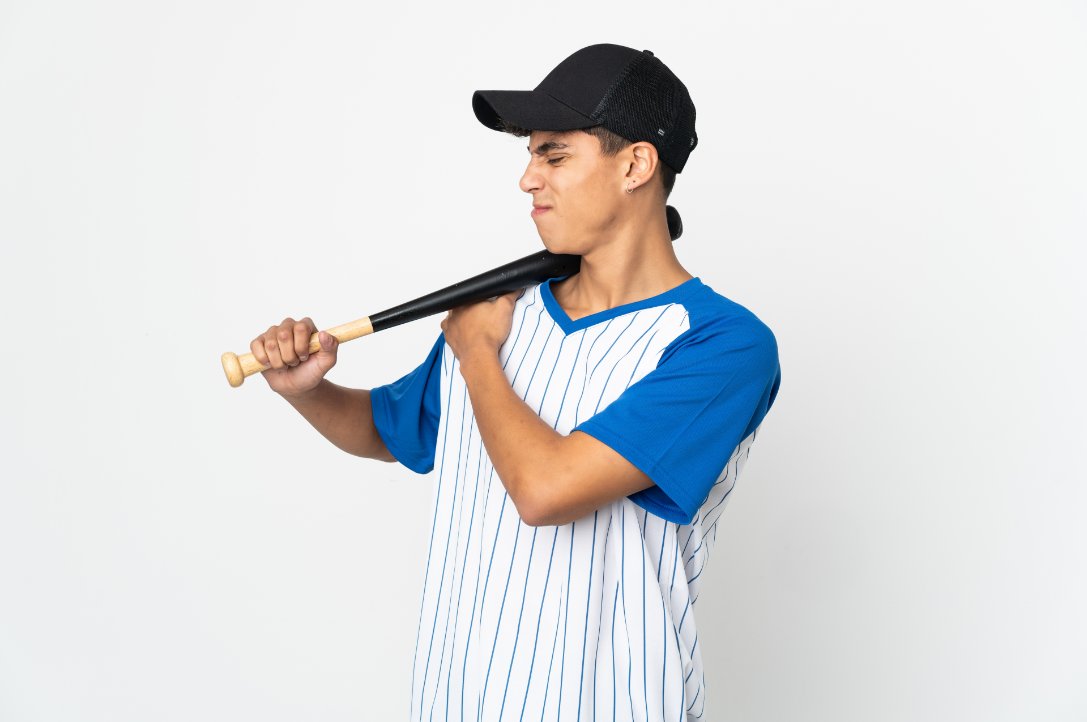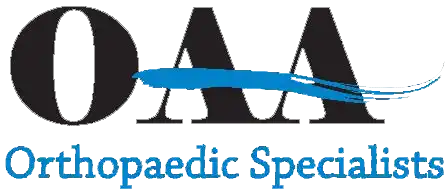 Baseball, famously known as America's favorite pastime, has a rich history and a loyal fan base. However, like any other sport, injuries are a common occurrence. From pitchers to outfielders, athletes at all levels face the possibility of musculoskeletal injuries that can not only sideline them for the season but also impact their daily lives.
Baseball, famously known as America's favorite pastime, has a rich history and a loyal fan base. However, like any other sport, injuries are a common occurrence. From pitchers to outfielders, athletes at all levels face the possibility of musculoskeletal injuries that can not only sideline them for the season but also impact their daily lives.
At OAA Orthopaedic Specialists, we understand the importance of preventing and effectively treating these common baseball injuries. Our team of experienced orthopedic physicians, alongside our dedicated sports medicine, physical therapy, and pain management teams, ensures that every athlete receives the comprehensive care they deserve.
Our specialized Sports Medicine Institute is at the forefront of addressing these concerns, offering tailored treatment plans designed to meet the unique needs of each patient. We invite all athletes, whether you're just starting out or have been in the game for years, to schedule an appointment with us and experience the difference that specialized, attentive care can make.
1. Rotator Cuff Tears
Rotator cuff tears are a common injury among baseball players, primarily affecting pitchers. This type of injury occurs due to the repetitive overuse of the shoulder during pitching, which places immense stress on the rotator cuff—a group of muscles and tendons that surround and stabilize the shoulder joint. Over time, this stress can cause tears in the tissues of the rotator cuff, leading to pain, weakness, and decreased range of motion in the arm.
At OAA, our approach to treating rotator cuff tears involves a detailed evaluation of the athlete's musculoskeletal system and medical history to tailor a treatment plan that addresses their specific needs. Non-invasive treatments, such as physical therapy, can be incredibly effective in strengthening the muscles around the shoulder joint and improving flexibility.
For cases that require additional attention, our Sports Medicine Institute is equipped with state-of-the-art technologies and a team of experts ready to offer advanced treatments and, if necessary, surgical options to ensure a full recovery.
2. Ulnar Collateral Ligament (UCL) Injuries
Like rotator cuff tears, ulnar collateral ligament (UCL) injuries are also common among pitchers. The UCL is a critical ligament in the elbow that provides stability, especially in the throwing motion of pitching. Due to the high velocity and repetitive nature of throwing, the strain on the UCL can lead to injuries ranging from mild inflammation to complete tears. A significant rupture often requires a 'Tommy John' surgery, named after the first professional athlete to undergo this type of orthopedic surgery successfully.
Our OAA team prioritizes early intervention and a customized approach to treat UCL injuries. Our non-surgical treatments include physical therapy to strengthen the muscles around the elbow and improve joint stability, alongside pain management strategies to ensure the athlete's comfort and recovery progress. However, severe cases might necessitate surgical intervention.
In such cases, an OAA orthopedic surgeon will utilize advanced techniques to repair or reconstruct the damaged UCL, sometimes by replacing the injured UCL with a tendon from another part of the patient's body or a donor. These surgical procedures have a proven success rate, allowing many athletes to return to their sport with restored function and resilience.
3. Knee Injuries
Knee injuries are another prevalent concern among baseball players, often resulting from the dynamic and sudden movements inherent to the sport. The anterior cruciate ligament (ACL), medial collateral ligament (MCL), and meniscus are common sites of injury due to quick pivots, slides, or impacts.
ACL and MCL tears usually occur when there's a sudden change in direction or speed, while meniscus tears can happen from both impact and twisting movements. Knee pain following these types of injuries can range from mild discomfort to severe, debilitating pain, affecting an athlete's ability to play and even perform everyday activities.
Understanding that each athlete's situation is unique, our OAA orthopedic doctors begin with a detailed assessment to determine the most effective treatment plan. For less severe injuries, we often recommend a combination of physical therapy and advanced pain management techniques to reduce inflammation and strengthen the knee, promoting healing and preventing future injuries. In cases where surgery is necessary, our skilled surgeons employ the latest techniques to repair or reconstruct the damaged ligaments and tissues, ensuring minimal recovery time and the best possible outcome for our patients.
4. Concussions
Concussions, a type of traumatic brain injury, are serious concerns in baseball, often resulting from being hit by a pitch or unexpected collisions on the field. These injuries can disrupt the brain's normal function, leading to symptoms that may include headaches, confusion, dizziness, and sometimes longer-term cognitive and physical impairments. Given the high stakes of brain health, it's crucial for athletes to receive immediate and expert care.
At OAA, our Sports Medicine Institute is deeply committed to the health and recovery of athletes experiencing concussions. We understand the complexities of head injuries and the paramount importance of a cautious and thorough approach to healing. To address this, we offer comprehensive evaluations to accurately diagnose the extent of the injury and design a personalized recovery plan, considering the athlete's specific needs and the demands of their sport.
Our multidisciplinary team collaborates to support athletes through their recovery, integrating advanced medical care and physical therapy to aid in restoring brain function. Recognizing the critical importance of timing in concussion treatment, we emphasize recovery and the safe, gradual reintegration into athletic activity, guided by the latest research and our extensive clinical experience.
5. Ankle Injuries
Ankle injuries, including sprains and fractures, are all too common in baseball, occurring most frequently during dynamic actions such as running the bases or fielding. These injuries typically result from rapid changes in direction, sliding into bases, or even missteps on uneven playing surfaces. An ankle sprain arises when the ligaments that support the ankle stretch beyond their limits or tear, while an ankle fracture involves one or more of the bones in the ankle joint being broken.
At OAA, our approach to treating ankle injuries begins with a thorough assessment by an experienced orthopedic doctor, who will diagnose the severity of the injury. Understanding that each injury and athlete is unique, we offer comprehensive treatment plans that combine state-of-the-art physical therapy techniques with cutting-edge pain management services. Our aim is to alleviate pain, reduce inflammation, and restore strength and mobility to the ankle.
For more complex cases, including severe sprains or fractures, surgical intervention may be necessary to ensure proper healing and return to play. Our orthopedic surgeons are adept at employing the latest surgical techniques to repair the damage and collaborate closely with our physical therapy team to develop a personalized rehabilitation plan.
6. Muscle Strains
Muscle strains are notably common in baseball due to the sport's requirement for running, sudden bursts of speed, and the explosive motions involved in batting and pitching. Specifically, the hamstrings, quadriceps, calves, back, and abdominals are particularly susceptible to strains as these muscles are heavily engaged during the game.
Baseball players constantly put these muscle groups under intense stress, whether sprinting to catch a fly ball, twisting to hit a fastball, or bending to scoop up a grounder. This continuous exertion can lead to overstretching or tearing of the muscle fibers, resulting in pain, weakness, and sometimes even swelling.
At OAA, our physical therapists are acutely aware of the stresses baseball places on the body. They specialize in sports-related injuries, bringing a deep understanding of how to best address and rehabilitate muscle strains specific to baseball players. Our therapists design personalized rehabilitation plans that not only focus on alleviating pain and repairing the damaged muscle but also on preventing future injuries through targeted exercises aimed at strengthening the muscle groups most at risk.
7. Hand & Wrist Injuries
Hand and wrist injuries in the realm of baseball can significantly impede a player's performance and capability, often occurring through sliding into bases or during challenging fielding maneuvers. The intricate structure of the hand and wrist, composed of numerous bones, ligaments, and tendons, makes them particularly susceptible to fractures and sprains. These injuries can range in severity but invariably affect a player's grip strength, dexterity, and overall ability to execute the fundamental aspects of the game, from batting to catching.
At OAA, our orthopedic surgeons are at the forefront of treating hand and wrist injuries, utilizing the most advanced techniques to ensure precise and effective care. Through comprehensive diagnostics, our team identifies the specific nature and extent of the injury, which is vital for customizing the most effective treatment plan. Our surgical approach often involves minimally invasive procedures that promote quicker recovery times, less pain, and minimal disruption to the surrounding tissues.
8. Pitcher's Elbow
Pitcher's elbow, which causes inflammation in the elbow, arises due to the repetitive stress and overuse of the elbow joint from throwing motions. This leads to inflammation, pain, and sometimes more serious injuries like tendonitis or ligament damage. The consequences of letting this condition go untreated can range from a temporary hindrance to a player's performance to a potentially career-ending issue if severe damage occurs.
Recognizing the urgency and complexity of elbow inflammation in baseball, our OAA team offers immediate and comprehensive care, starting with our emergency treatments to address acute injuries. Our Sports Medicine Institute is equipped with advanced diagnostic tools to accurately assess the severity of the condition.
Following diagnosis, our integrated team of specialists devises a personalized treatment plan that combines the latest pain management strategies, minimally invasive surgical options when necessary, and targeted physical therapy. Each step of our rehabilitative support is designed to alleviate current symptoms and strengthen the elbow against future injuries, ensuring athletes can return to the sport they love.
Don't Let Baseball Injuries Hold You Back
Whether you're a seasoned pro or just love the game, baseball injuries can be a major setback, not just for your performance on the field but also for your overall long-term health. It’s crucial to recognize when an injury occurs and seek prompt, specialized treatment. While your primary care doctor is an excellent resource for general health concerns, the complex nature of sports injuries, particularly those common in baseball, often requires the expertise that only orthopedic surgeons and specialists can provide.
An orthopaedic surgeon has trained in medical school and spent additional years in medical specialty training focused solely on the musculoskeletal system. This specialized training equips our surgeons with the unique skills needed for both non-surgical and surgical management of sports injuries.
Choosing to consult with an orthopaedic specialist can be the difference between a speedy and successful recovery and ongoing issues that can hamper your health and athletic performance. Orthopedic surgery, when needed, is not just about repairing an injury; it's about restoring your body's functionality to its peak. And, after surgery, personalized rehabilitation tailored to your specific needs is crucial for regaining strength and preventing future injuries.
At OAA Orthopaedic Specialists, our team is dedicated to providing comprehensive care that begins with an accurate diagnosis and follows through to your full recovery. We invite you to connect with us for expert care that is as dedicated and personalized as your love for the game. Our surgeons and specialists are here to ensure that injuries don't hold you back, helping you return to baseball with confidence and strength.
If you are struggling with an injury, pain, or are in need of orthopaedic surgery, contact our highly skilled team of orthopaedic surgeons at OAA Orthopaedic Specialists or schedule an appointment directly on our website today.

